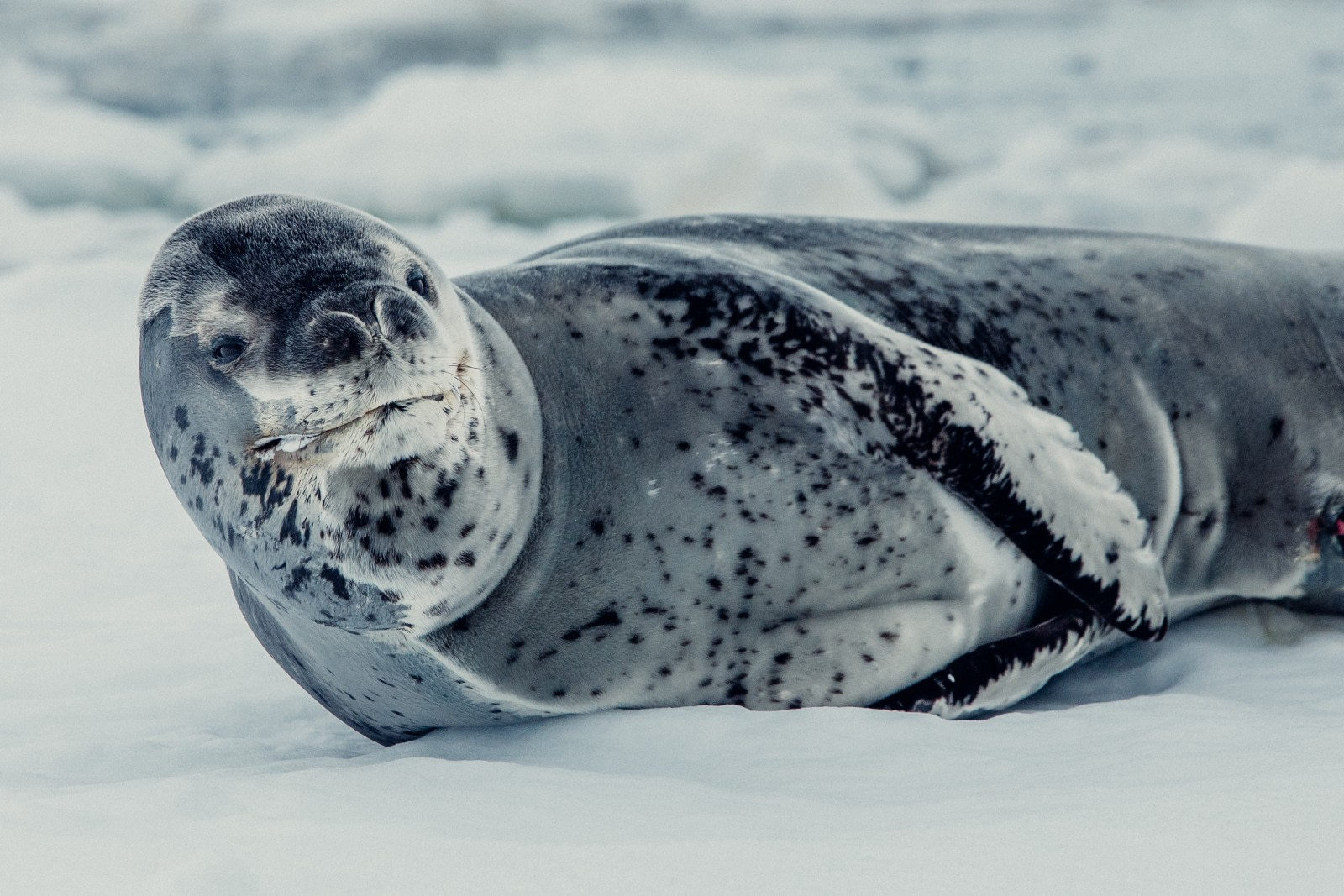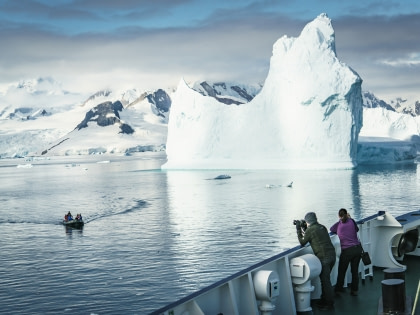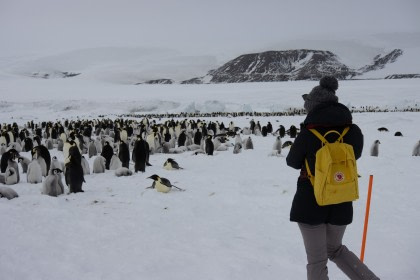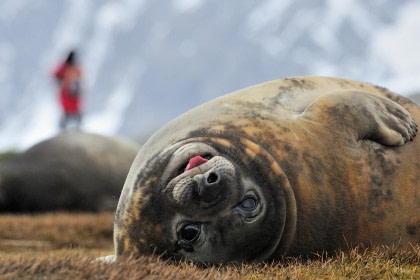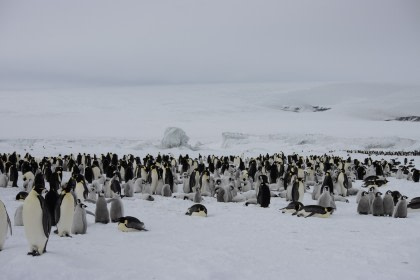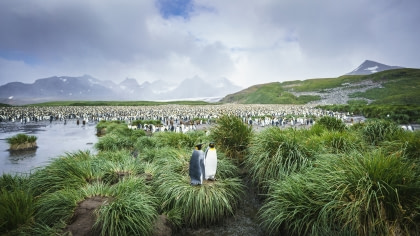Many people ask me what is it like to roll off the boat into zero-degree water - Does your face freeze? Yes, but you quickly get used to it. Is the equipment heavy? Yes, but I’m ‘weightless’ in the water. Is there anything to see? Yes, lots… I tell them about sponges, corals, seastars, cucumbers, snails, fish, giant isopods, sea-spiders, penguins, icebergs…and the leopard seals.
With a head three times the size of our own equipped with large canine and tricuspid teeth, powered by 1000 pounds of muscle and flesh in a twelve-foot long frame, this is a creature to admire and respect. I remember one particularly impressive seal. It swam around and amongst us, manoeuvring with precise grace using its long foreflippers. Straight away it began to gape at the various cameras, flashing teeth to flashing strobes.
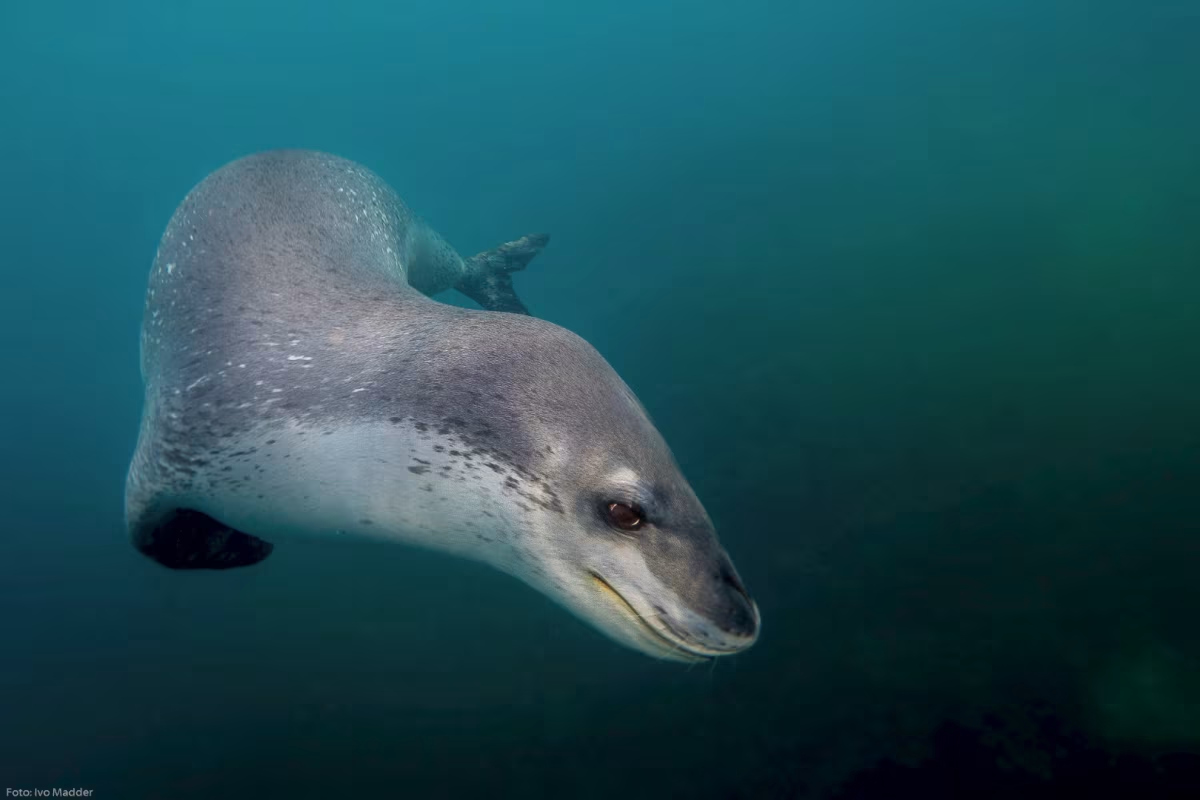
I found myself eyeball to huge, black eyeball with this mighty seal - it hung in the water, slowly twisting and gazing at me, that huge crooked mouth ‘smiling.’ Later in the day we returned and watched with macabre enthusiasm as the seal chased down and dismembered a penguin, with our snorkelers mere feet away.
This was a very special encounter. There are few places in the world where you can get so close to an apex carnivore while it stalks, hunts, kills and eats. Iconic top predators such leopard seals and polar bears are under intense pressure, mostly due to some kind of human impact and it is a privilege to see them in their natural environment through responsible tourism.
Leopard seal facts video
We’ve compiled some of our favorite facts about leopard seals and put them into a brief but lively video. Enjoy watching leopard seals in their natural environment while learning 12 interesting facts about these elusive Antarctic seals.
